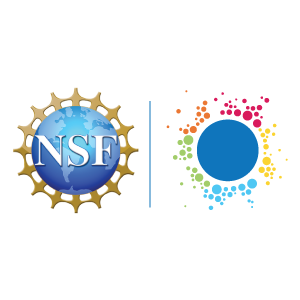By: Carise Mitch, NSF INCLUDES Coordination Hub
In a year of unprecedented challenges, NSF INCLUDES Network members innovated and adapted, always moving forward and finding new opportunities to broaden participation in STEM education and careers. A recent discussion thread on the Network’s online community highlighted just a few of 2020’s success stories:
Scott Bellman, of the Do-It (Disabilities, Opportunities, Internetworking, and Technology) Center shared that they, along with the Center for Neurotechnology (CNT) – a NSF Engineering Research Center – launched a new program for neurodiverse learners, planned for March 2020. The pandemic forced them to quickly pivot from the intended in-person classes to an online learning environment, discovering in the process that it could be a strength of the program rather than a weakness. Wayne Gillam of CNT said, “In a manner uncannily parallel to how the unique traits and characteristics of neurodiverse learners often brings forward unexpected talents and strengths, staff members were pleasantly surprised to discover that the online learning environment – which they initially thought of as a challenge or obstacle to be overcome – turned out to be a major strength of the program.”
Bruce Bukiet of Leadership and iSTEAM for Females in Elementary Schools / STEM for Success at the New Jersey Institute of Technology (NJIT), an NSF INCLUDES DDLP (Design and Development Launch Pilot) said they had to think fast last March when the pandemic shut down plans for in-person meetings and STEM month events. Instead, they asked female NJIT undergraduate students in STEM fields to make videos for the group’s partner clubs on interesting STEM demonstrations that could be done at home, like making your own parachute, cleaning pennies, using invisible ink, and more. They then hosted online events where students could ask questions of the undergraduates. The videos proved enormously popular and are slated to be gathered onto a website, with activity plans to accompany each video.
Invisible ink
***
Karen Peterman of the NSF INCLUDES-funded SEAS (Supporting Emerging Aquatic Scientists) Islands Alliance shared that they didn’t let the pandemic slow them down, recently launching a new website featuring video profiles of Alliance students. “Our Alliance students like Zola, Joe, and Jezreelyn are what this project is all about and having them describe their work and the project in their own words have been the kind of boost we needed in 2020,” said Peterman.
***
We the People – Math Literacy for All Alliance is bringing together students and teachers as partners with mathematicians, mathematics educators, school leaders, researchers, parents, community members and policymakers to develop strategies that support K-12 mathematics literacy. It is focused on supporting students and teachers in schools that are historically marginalized and under-resourced.
According to Benjamin Moynihan and Frank Davis of the project, associated members had an extremely busy 2020, hosting many virtual events, including a two-day virtual flagway tournament in Boston and summer virtual professional development for educators in Washington D.C. and New Orleans, developing an all-virtual STEM Video for All Showcase video, drafting a consensus document on the need for federal intervention in U.S. mathematics education, and many more activities.
Learn more through the discussion post.
***
SIMIODE (Systemic Initiative for Modeling Investigations & Opportunities for Differential Equations) had planned to host a challenge with student teams from high school and undergraduate programs around the world sharing modeling efforts in a ten-minute presentation for judging and feedback. Brian Winkel of the project shared that due to the pandemic, they instead asked the student teams to prepare a ten-minute video of their work and were able to recruit 380 colleagues from academia and industry as volunteer judges to review the videos and offer feedback. SIMIODE is funded through the NSF Division of Undergraduate Education: Improving Undergraduate STEM Education.
Despite the many challenges of 2020, SIMIODE was also able to plan an international virtual conference for 2021 and prepare Differential Equations: Modeling to Describe The World, a text which will be available for classroom use later in the spring.

